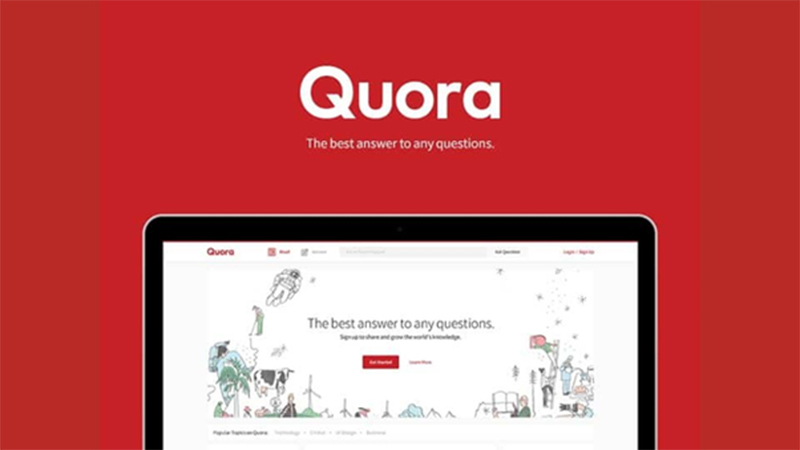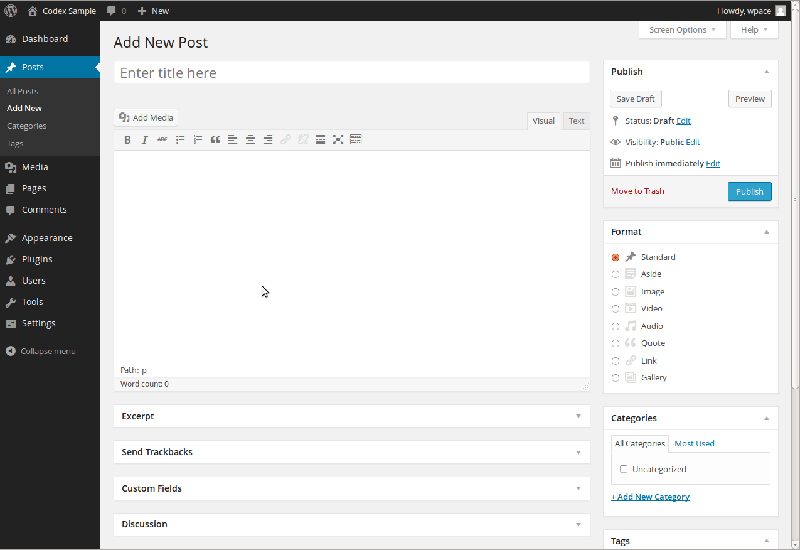
The freelancing industry is currently experiencing a market saturation of epic proportions. Everybody wants in on the action. Upwork alone has over 18 million freelancers, however only about 5 million registered clients. That’s a ratio of almost 4 freelancers for every 1 client.
Standing out on such platforms can be extremely challenging, especially if you’re a newbie. But the good news is that there are many other ways of finding clients on the internet.
This article will go over 7 alternative ways of finding freelancing clients without having to rely on the saturated platforms. But before we can get started, take some time to work on your buyer persona.
A buyer persona is a research-based depiction of your most ideal clients. When you know who they are, you’ll be able to create well-informed plans and refine your marketing messages in a way that resonates with them.
7 Ways to Grow Your Freelancing Business
1. Use Linkedin To Find Leads

LinkedIn is an exceptional place to find leads online. Unlike most other social platforms, its userbase mostly consists of business decision-makers with a higher purchase power than the average internet user.
You can find clients on LinkedIn by browsing the jobs section to find new openings which match your profile. For example, if you’re a freelance web designer, you can search for the keywords “web design” to find the latest openings.
Although most companies are likely to be looking for full-time employees, some would be open to the idea of hiring a freelancer instead. Hiring a freelancer enables them to reduce costs such as salary, taxes, training, etc. Make sure to mention all the benefits in your application.
Another way you can find leads is by searching for people who match your buyer persona and then doing a cold approach.
LinkedIn lets you to search for people-based factors such as job title, location, and even organizations they work for. So, let’s say your primary targets are business consultants based in New York, you can search for users who have the title “business consultant” in their profile, and then filter the results by location, and add “New York”.
Scan through the profiles in the search results and then send a connection request to people who most resemble your buyer persona, along with a brief introductory message.
Always resist the urge to start selling right away as it can really put people off. Instead, look to first build some rapport by asking friendly and non-intrusive questions to warm them up.
2. Run a PPC campaign

Pay per click, or PPC, is an online advertising model where advertisers get charged a small fee whenever their ads get clicked.
You can start a campaign targeting people who use search engines like Google and Bing to search for freelancing services. The only requirement will be that you have a website or landing page where the traffic will be directed to.
Google Ads lets you target people based on attributes such as age, location, industry, income class, and even keywords they’re actively searching. Although the cost-per-click can sometimes be on the higher side, the average conversion rates are also relatively high.
3. Answer Quora Questions

Quora is a Q&A platform where internet users can ask all sorts of questions and get answers from other users.
You can search for questions that fall within your line of work and simply provide useful answers. For example, if you are a freelance web developer, you can search for questions along the lines of “how to build a website”. People who ask such questions are likely to require web development services.
Every time you answer a question, you are showcasing your expertise and subtly advertising your services. Quora questions often get hundreds or even thousands of views from people facing similar challenges. Answering just a single question a day can go a long way in helping generate leads for your business.
4. Publish Blog Posts

A blog can help you build credibility and earn people’s confidence in your expertise. You can publish articles on relevant topics that have a high search volume and low competition (meaning they have not been covered by many other blogs).
For example, if you are a graphic designer and you discover that many people search for the phrase “cheap logo design services”, you can write an article on “How to get a professional logo for less than $10”.
The key to finding relevant topics is by doing an extensive keyword research. You can use tools such as Ahrefs, SEMrush, and Google Keyword Planner to help with that.

5. Join Social Media Groups
Join groups on LinkedIn or Facebook where your buyer persona hangs out and make them your hunting ground. For example, if your buyer persona is an entrepreneur, you can join a “small business owners” group.
Your first challenge will be to get the members acquainted with your name. Every time there’s a discussion where you feel like you can add value, don’t hesitate to participate. You can even ask questions to get other members to engage with you.
Don’t make the mistake of mindlessly selling as soon as you join a group. That’s a sure-fire way of getting kicked out. Wait patiently for the right moment before you can make your move.
For example, whenever somebody is facing a problem in an area that you specialize in, you can mention how you could potentially help them solve it. You can even follow up by sending them a private message. If they’ve seen your name around then you won’t be a stranger to them.
6. Cross Promotion Partnerships
Cross promotion involves partnering with other professionals who are in a different (but relative) niche as you, and then promoting each other across your various marketing channels.
If you’re a graphic designer, then you can partner with web developers. They are not your direct competitors but are likely to have clients who require branding for their websites.
You can promote each other via blog posts, on social media, and even through direct referrals. It takes very little effort and has no expenses involved.
7. Develop The Habit Of Asking For Referrals

Asking for referrals encourages people to put in a good word for you to their peers. You can ask for them from your friends and family, LinkedIn connections, social media group members, previous colleagues, and pretty much anyone who you have a working relationship with.
Whenever you pitch your services to someone, but they’re not able to hire you, first thank them for their time, and then ask for a referral. When you finish working with a client, ask for a referral. Remember that what you’re asking for is a favour, not an obligation, so don’t be pushy.
People are more likely to refer you if they like you as a person, so be nice to everyone you meet. You can even occasionally offer to help them out with anything they need for free.

Source- https://growthstrategies101.com/how-to-get-clients-as-a-virtual-assistant/
Conclusion
Many businesses have been actively downsizing to help reduce their operational costs and protect their bottom lines from the effects of the pandemic, and that has led to an increase in demand for freelancers. Hiring a freelancer is significantly cheaper than maintaining a full-time employee.
The opportunities for work are now greater than ever before. If you find that one approach is not working out as planned, don’t despair, just try another. Never be too reliant on a single channel, particularly the notorious and highly saturated freelancing platforms.
Author bio:
Emmanuel Soroba is the founder and lead editor of Growth Strategies 101, a digital marketing consultancy and business blog for start-ups and small businesses.
LinkedIn: https://www.linkedin.com/in/emmanuel-soroba/
Email: e.soroba@growthstrategies101.com
Company: Growth Strategies 101















